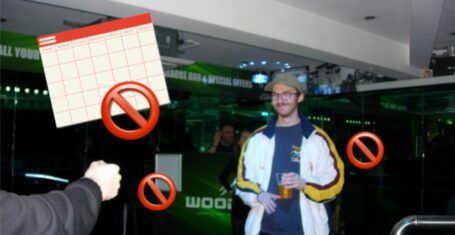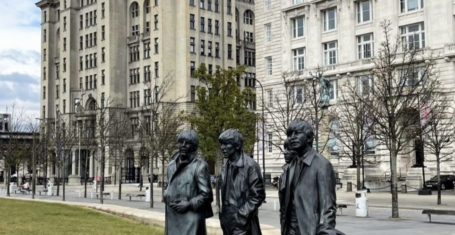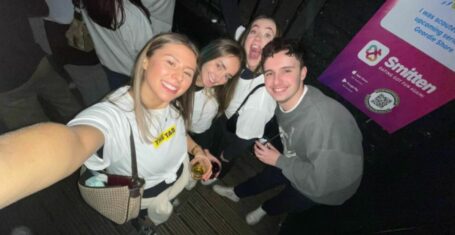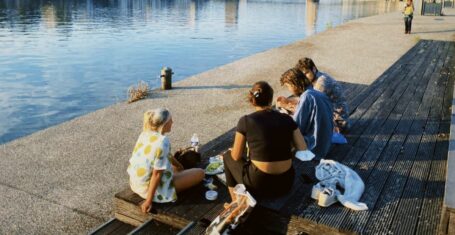
These are the most controversial landmarks in Liverpool that you walk past everyday
Why did everyone have to be a slave trader?
As a student in Liverpool, it's easy to get wrapped up in extremely important life choices, like whether to bin off your Tuesday 9am for a night in The Raz, or if you should risk leaving your (relatively) warm bed for an uncertain seat in the Sydney Jones.
You wouldn't be to blame if student life distracted you from just how much history there is around us, but it isn't all good. Among other dodgy stuff, Liverpool is notable for its references to the slave trade, which the city dominated prior to its abolition in 1833.
If you want to be the ultimate guide on the more problematic side of Liverpool, here are the most controversial landmarks that we all see on almost daily basis.
Abercromby Square

Prettiest building on campus for a reason…
If you're an English student at UoL you'll be familiar with the endless maze that is 19 Abercromby Square. When you next walk through the entrance (if you're surprisingly not late) take a look above your head and you'll see a painting of a palm tree. To your right will be a plaque explaining that the building was redeveloped to house an American confederate slave trader, Charles Prioleau, who romanticised slavery in the building through art.
Bit deep to learn about at 9am on a Monday morning, but it's important to remember just how ingrained slavery was into everyday life in the city we call home.
Albert Dock

It wasn't always this fancy.
The home of some of Liverpool's posher restaurants, bars and shops used to be the centre for all shipping and trade in Europe.
Not only did 80% of ships that were part of the slave trade dock here, enslaved people would have walked along the cobbles that we awkwardly stumble over today.
Gladstone Halls

Dedicating halls to a slavery sympathiser? Weird flex.
First years at Greenbank will (annoyingly) be very aware of the redevelopment of Roscoe and Gladstone Halls. But did you know that the latter is named after William Gladstone, British Prime Minister and anti-abolitionist whose wealth was built off the slave trade?
Check out the defunct campaign to change the halls' name here.
Pier Head

Ah, the most iconic buildings of Liverpool's skyline that are bound to be featured on everyone's instagram pics. But zoom in a little closer and you can't ignore all of the engravings of African people alongside slave ships – an eerie reminder that these buildings were once used to prop up the slave trade through business.
Penny Lane

References to slavery are in my ears and in my eyes.
Some might (wrongly) say that this Beatles song is a banger. However, every time you sing it, you're singing the name of a notable slave trader called James Penny.
Lennon and Macca obviously didn't write a song about this street because of its namesake, but it's defo a bit unsettling when you think about it.
St Nick's Church

What's that gold thing at the top?
Our Lady and Saint Nicholas' Church, just off the docks, was once the main site of worship in Liverpool.
If you have good eyesight and look upwards, you won't miss a golden sculpture sitting on top of the spire. The sculpture is of a slave ship and was added to the church at the height of the slave trade in Liverpool.
Town Hall

Liverpool Town Hall is hidden away behind Liverpool ONE, so you'd be forgiven for missing it.
But if you ever find yourself walking past it you'll notice that its fencing is decorated with golden sculptures of pineapples, a reference to the fact that the building was funded by money generated by – you guessed it – the slave trade.
Bold Street

The namesake of the coolest street in Liverpool isn't so cool.
Bold Street is also named after a notable slave trader: Jonas Bold. Not only that, but the exact length of the street was used to measure ropes for slave ships, which is why the area is now called the Ropewalks.
Nelson Monument

It's kinda fucked up that you can walk past this in 2019.
Remember Admiral Nelson? That Waterloo guy you learnt about in primary school history? This is a monument to him at Exchange Flags, and it's one of the more obvious references to slavery in Liverpool.
He was guilty of doing business with slaveowners in the Caribbean, so the sculptures of people in shackles make this monument pretty disturbing.
Honourable Mentions
Slavery has had a massive impact on the way we see Liverpool today, but it wasn't the only thing that led to problematic landmarks.
This statue is of Bessie Braddocks, who was a Labour party MP for Liverpool from 1945-1970.

She didn't have many Welsh fans.
In her quest to provide drinking water for the city, however, she suggested and approved the flooding of the entire Welsh town of Capel Celyn to make a reservoir. Imagine flooding a whole town – the oddest of flexes.
St John's Shopping Centre

The OG Stanley Street.
Before St John's was built in the sixties, the area was home to most of Liverpool's underground gay pubs and bars, but most of these were demolished to make way for the shopping centre.
The LGBT community soon relocated to what is now the official gay quarter.
Liverpool's history wasn't all pretty…
The story of our city goes far beyond The Beatles, mostly being defined by the Atlantic slave trade. That being said, erasing history isn't really the answer, but we should definitely be more aware of the true meaning of the things we see everyday.
So, next time you head to the docks to show your friends from home that you're a cultured student, take a moment to remember why they were built in the first place.









































